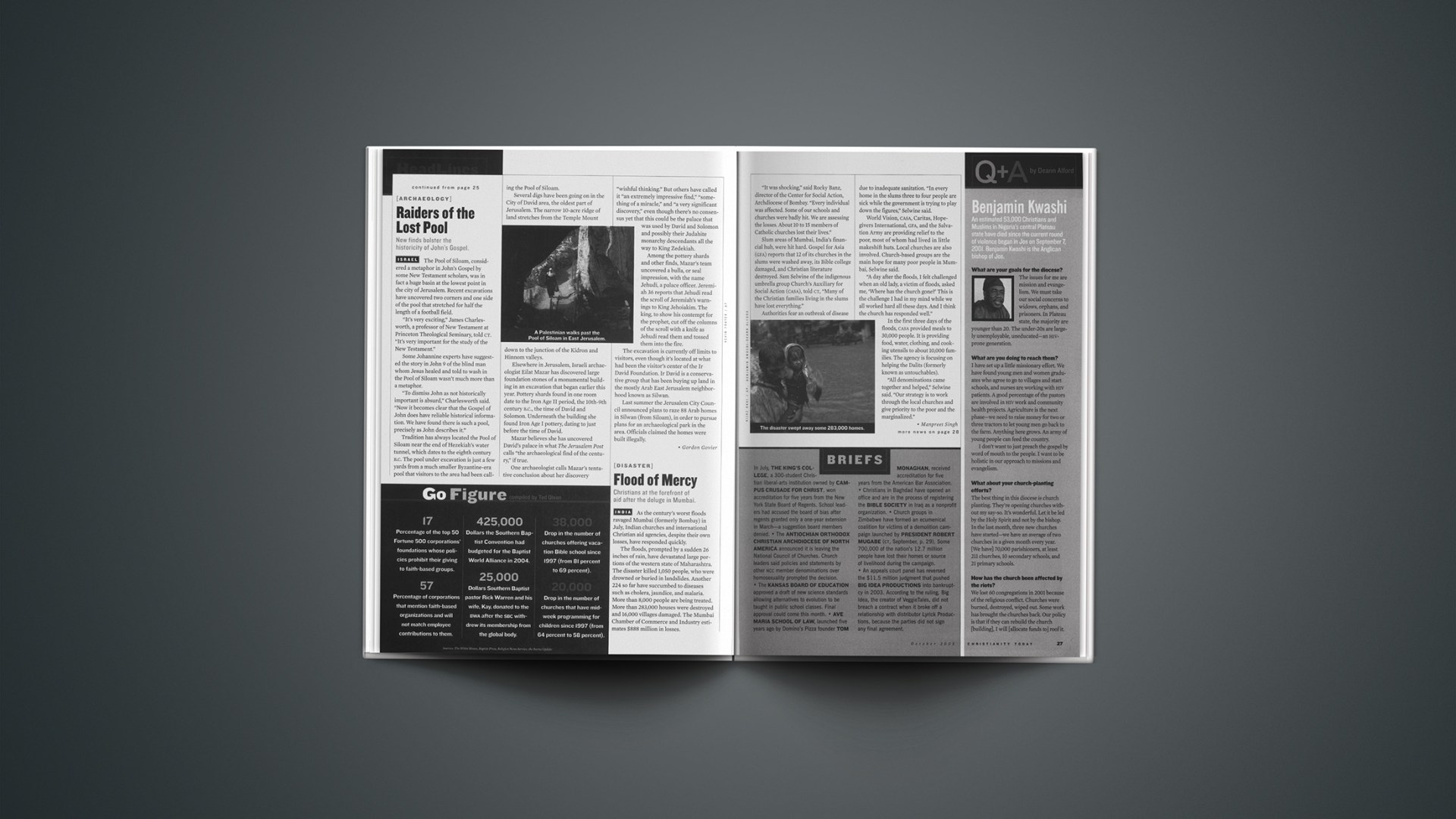| • |
The Pool of Siloam, considered a metaphor in John’s Gospel by some New Testament scholars, was in fact a huge basin at the lowest point in the city of Jerusalem. Recent excavations have uncovered two corners and one side of the pool that stretched for half the length of a football field.
“It’s very exciting,” James Charlesworth, a professor of New Testament at Princeton Theological Seminary, told CT. “It’s very important for the study of the New Testament.”
Some Johannine experts have suggested the story in John 9 of the blind man whom Jesus healed and told to wash in the Pool of Siloam wasn’t much more than a metaphor.
“To dismiss John as not historically important is absurd,” Charlesworth said. “Now it becomes clear that the Gospel of John does have reliable historical information. We have found there is such a pool, precisely as John describes it.”
Tradition has always located the Pool of Siloam near the end of Hezekiah’s water tunnel, which dates to the eighth century B.C. The pool under excavation is just a few yards from a much smaller Byzantine-era pool that visitors to the area had been calling the Pool of Siloam.
Several digs have been going on in the City of David area, the oldest part of Jerusalem. The narrow 10-acre ridge of land stretches from the Temple Mount down to the junction of the Kidron and Hinnom valleys.
Elsewhere in Jerusalem, Israeli archaeologist Eilat Mazar has discovered large foundation stones of a monumental building in an excavation that began earlier this year. Pottery shards found in one room date to the Iron Age II period, the 10th-9th century B.C., the time of David and Solomon. Underneath the building she found Iron Age I pottery, dating to just before the time of David.
Mazar believes she has uncovered David’s palace in what The Jerusalem Post calls “the archaeological find of the century,” if true.
One archaeologist calls Mazar’s tentative conclusion about her discovery “wishful thinking.” But others have called it “an extremely impressive find,” “something of a miracle,” and “a very significant discovery,” even though there’s no consensus yet that this could be the palace that was used by David and Solomon and possibly their Judahite monarchy descendants all the way to King Zedekiah.
Among the pottery shards and other finds, Mazar’s team uncovered a bulla, or seal impression, with the name Jehudi, a palace officer. Jeremiah 36 reports that Jehudi read the scroll of Jeremiah’s warnings to King Jehoiakim. The king, to show his contempt for the prophet, cut off the columns of the scroll with a knife as Jehudi read them and tossed them into the fire.
The excavation is currently off limits to visitors, even though it’s located at what had been the visitor’s center of the Ir David Foundation. Ir David is a conservative group that has been buying up land in the mostly Arab East Jerusalem neighborhood known as Silwan.
Last summer the Jerusalem City Council announced plans to raze 88 Arab homes in Silwan (from Siloam), in order to pursue plans for an archaeological park in the area. Officials claimed the homes were built illegally.
Copyright © 2005 Christianity Today. Click for reprint information.
Related Elsewhere:
Articles elsewhere on the find are available from the Los Angeles Times (via Pittsburg Post Gazette) TravelVideo.tv.
More archeology articles are available on our History page.










